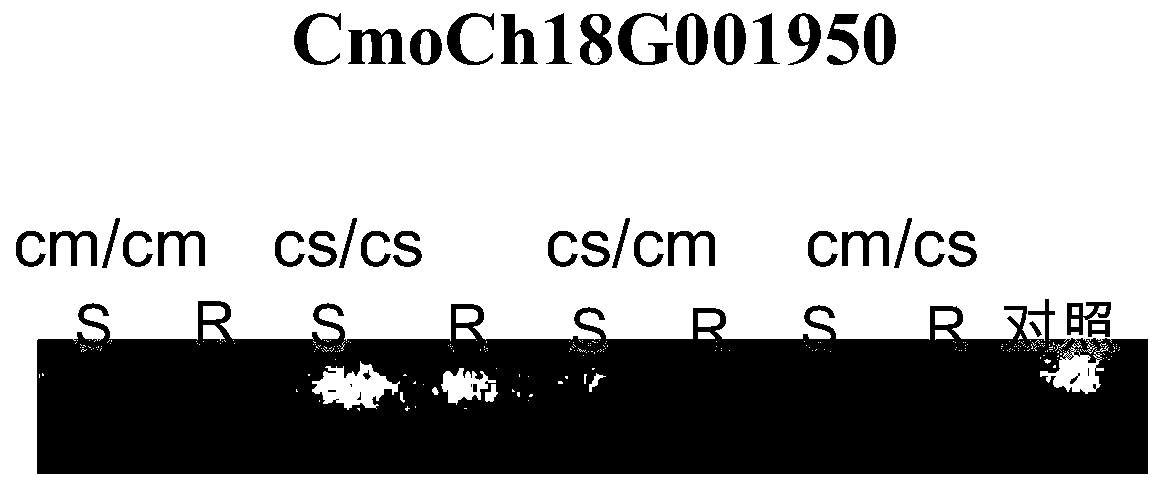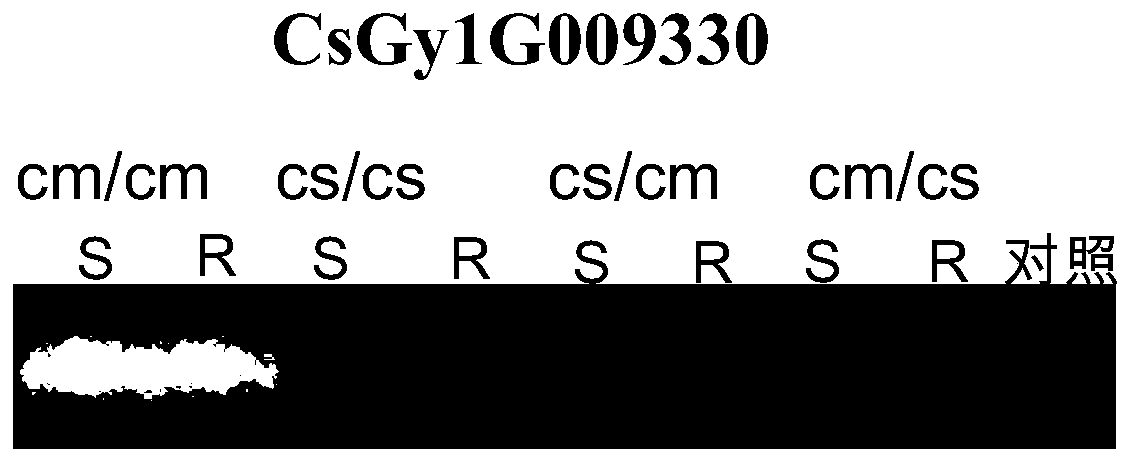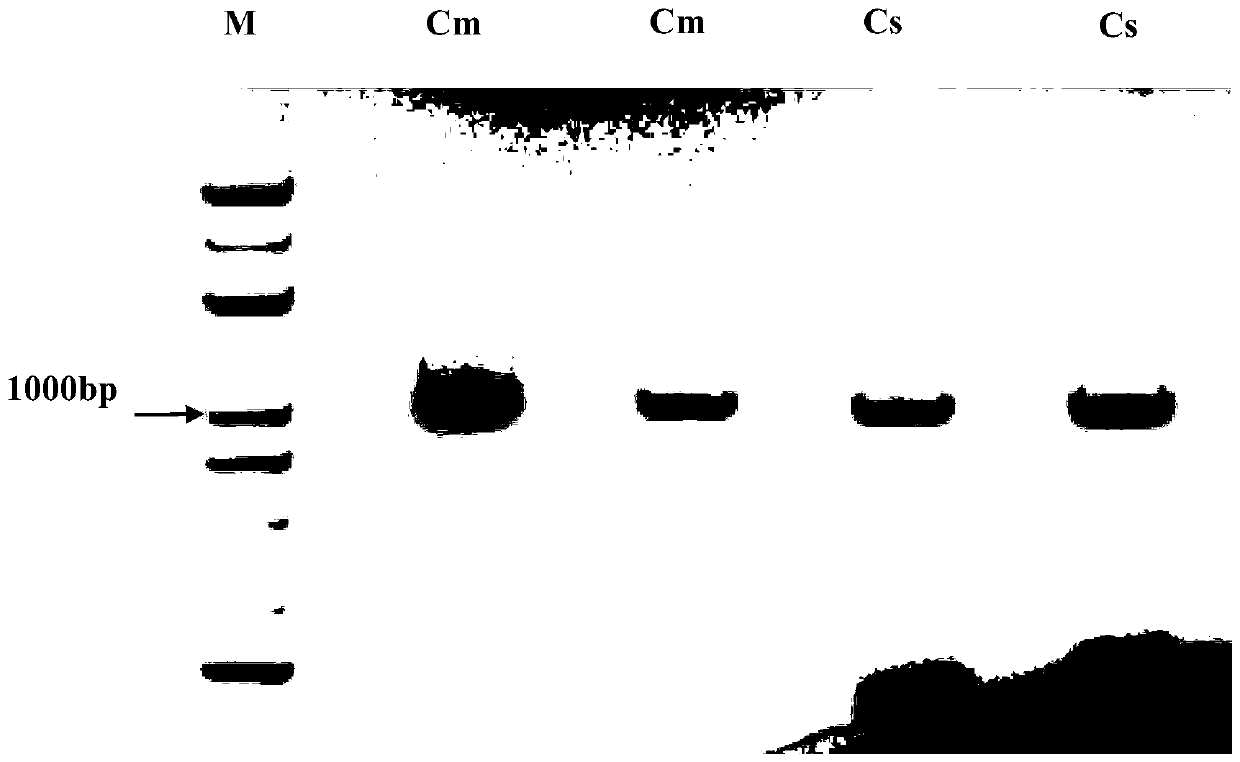Recognition method for transporting mRNA (messenger ribonucleic acid) of GAPC1 gene among cucurbitaceae rootstocks and ears
A technology of genes and gene fragments, applied in the field of plant molecular biology, can solve problems such as many requirements, cumbersome processes, and difficult operations
- Summary
- Abstract
- Description
- Claims
- Application Information
AI Technical Summary
Problems solved by technology
Method used
Image
Examples
Embodiment 1
[0041] Embodiment 1: cucumber and pumpkin grafting
[0042] (1) Cultivation of scion and rootstock: The rootstock and scion seeds are respectively raised for seedlings, until the scion grows to one leaf and one heart, the cotyledons of the stock are fully expanded, and the thickness of the hypocotyls of the stock and the scion remains consistent.
[0043] (2) Hypocotyl grafting: use blade to cut obliquely downward 30 ° of slopes at 1 cm below the cotyledons of the scion, remove all the cotyledons of the stock, obliquely cut 1 knife at 1 cm below the cotyledons of the stock with a blade, and the length of the section is consistent with the scion, and then Align the scion with the cutting surface of the rootstock and fix it tightly with grafting clips; then graft the cotyledons of the rootstock to the cutting surface of the original scion, and fix the grafting interface with grafting clips.
[0044] (3) Management after grafting: the grafted seedlings are placed in the seedling ...
Embodiment 2
[0045] Example 2: total RNA extraction
[0046] Total RNA was extracted using the CTAB method, and the method steps were as follows:
[0047] (1) Take 2 g of blade material, grind it into fine powder in liquid nitrogen.
[0048] (2) Add 10ml 65°C preheated CTAB extract and 500μl β-mercaptoethanol to each tube, vigorously vortex homogenate, and incubate in a 65°C water bath for 30min.
[0049] (3) Add 10ml of chloroform:isoamyl alcohol (24:1) to each tube, vortex to mix, and ice-bath for 10min. Centrifuge at 12000rpm for 10min at 4°C.
[0050] (4) Take the supernatant, add 1 / 3 volume of 8M LiCl and 500 μl β-mercaptoethanol, and precipitate overnight at -20°C.
[0051] (5) Centrifuge at 12000 rpm for 20 min at 4°C.
[0052](6) Discard the supernatant, dissolve the precipitate with 4ml guanidine isothiocyanate denaturing solution, add 120μl β-mercaptoethanol and 880μl 2M NaAc (pH4.0), mix well and add 5ml of phenol: chloroform: isoamyl alcohol (25:24 : 1), vortex mix, ice ba...
Embodiment 3
[0058] Example 3: RNA reverse transcription into cDNA
[0059] Using TaKaRa Bio reagents, PrimeScript TM RT reagent Kit with gDNA Eraser (Perfect Real Time), according to the company instructions:
[0060] (1) Genomic DNA removal reaction
[0061] Prepare the reaction mixture on ice according to the following components. In order to ensure the accuracy of the preparation of the reaction solution, when performing each reaction, prepare the Master Mix according to the number of reactions + 2, and then distribute it into each reaction tube. Add the RNA sample last.
[0062]
[0063] 2min at 42°C (or 5min at room temperature)
[0064] 4°C
[0065] (2) Reverse transcription reaction
[0066] Please prepare the reaction solution on ice. In order to ensure the accuracy of the preparation of the reaction solution, when performing various reactions, the Master Mix should be prepared according to the number of reactions + 2, and then 10 μl should be dispensed into each reaction...
PUM
 Login to View More
Login to View More Abstract
Description
Claims
Application Information
 Login to View More
Login to View More - Generate Ideas
- Intellectual Property
- Life Sciences
- Materials
- Tech Scout
- Unparalleled Data Quality
- Higher Quality Content
- 60% Fewer Hallucinations
Browse by: Latest US Patents, China's latest patents, Technical Efficacy Thesaurus, Application Domain, Technology Topic, Popular Technical Reports.
© 2025 PatSnap. All rights reserved.Legal|Privacy policy|Modern Slavery Act Transparency Statement|Sitemap|About US| Contact US: help@patsnap.com



